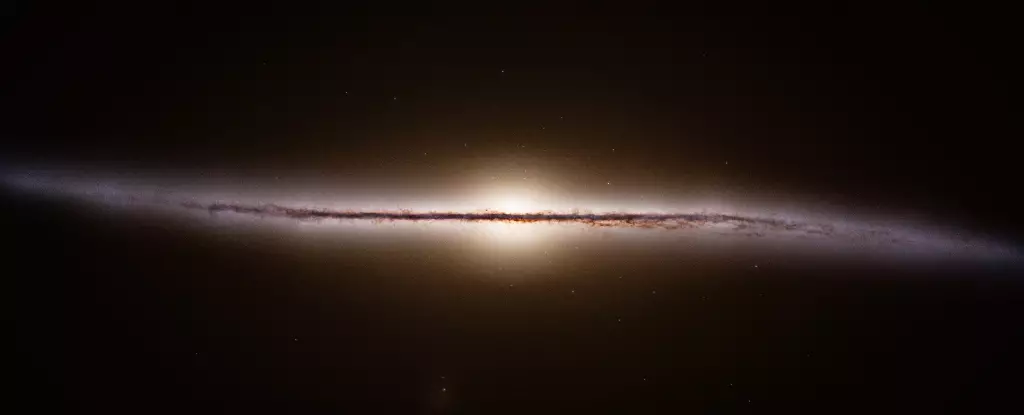The progression of human knowledge is often gauged by our ability to challenge established beliefs and adopt innovative paradigms. The European Space Agency’s (ESA) Gaia mission exemplifies this principle, as it has remarkably transformed our comprehension of the Milky Way galaxy. By providing an expansive, three-dimensional map through its extensive observational data, Gaia has led scientists to reevaluate long-held notions in astrophysics. With the conclusion of the Gaia mission, we are now positioned on the precipice of a new era in galactic studies.
Launched in 2013, Gaia is primarily an astrometry spacecraft designed to meticulously catalog the positions and velocities of nearly two billion stars within our galaxy. Over its eleven-year mission, the spacecraft has conducted three trillion observations, offering unprecedented accuracy and detail in our understanding of the Milky Way. Unlike traditional maps, which might provide static images of stellar configurations, Gaia’s data outlines a dynamic and continuously changing structure that encapsulates the galaxy’s evolutionary tapestry.
The journey to understanding the Milky Way is steeped in a rich history that stretches back decades. The 1950s heralded the advent of radio astronomy, a significant leap forward in deciphering the galaxy’s architecture. Early astronomers utilized radio waves to penetrate obscuring cosmic dust, leading to the realization of the Milky Way’s spiral form. Groundbreaking surveys, initiated in 1952, illuminated the galaxy’s hydrogen distribution, evidencing the presence of spiral arms.
Throughout the years, astronomers expanded their toolkit, employing variable stars, globular clusters, and infrared observations to map out their celestial surroundings. The launch of the Hipparcos mission in 1989 marked another milestone—a predecessor to Gaia that offered valuable insights, albeit at a limited scale. While Hipparcos measured the movements of around 100,000 stars, it foreshadowed the transformative capabilities of Gaia, which ultimately surpassed its limitations.
What distinguishes Gaia from its predecessors is the sheer scale and precision of its observations. By measuring the spatial coordinates and proper motions of billions of stars, Gaia has offered profound insights into the structure of our galaxy. Notably, its data reveal that the Milky Way features multiple spiral arms that differ from prior expectations in terms of prominence and configuration. Gaia has mapped out previously undiscovered structures, such as “fossil arms,” which may represent the remnants of historical interactions with other galaxy-sized entities.
Furthermore, the mission has unveiled filamentary structures at the edges of the Milky Way, enriching our understanding of the galactic boundaries and their complexities. An intricate aspect of this exploration is the new perspective of the galaxy’s side view, showcasing a subtle wave in the galactic disk—speculated to originate from gravitational interactions with the Sagittarius Dwarf Spheroidal galaxy. Such revelations provide not merely a static snapshot but a narrative continuum of the Milky Way’s transformative journey.
The linguistic barrier of scientific data has been beautifully bridged by artists who have translated Gaia’s findings into compelling visual interpretations. These artistic renditions serve as more than just visual embellishments; they embody the intricate relationships and structures within the Milky Way, inviting audiences to engage with our galactic home on a more visceral level. The stunning illustrations based on Gaia’s extensive data have allowed us to experience our universe from a fresh perspective, enhancing our appreciation for the cosmos.
Though the primary mission of Gaia has reached its completion, we find ourselves on the brink of further discoveries. The final data release, designated DR5, is anticipated for the end of 2030, hinting at the countless secrets yet to be unraveled. The unprecedented level of detail provided by Gaia continues to reshape our understanding not only of the Milky Way but also of the cosmic environment we inhabit.
In reflecting on Gaia’s journey, it becomes evident that this mission marks a pivotal chapter in astronomical research. Its contributions will likely echo through generations, shaping the pathways for future exploration and inquiry. Ultimately, as our comprehension of the universe advances, we gain not only knowledge but also a profound sense of place within the grand expanse of space.
The Gaia mission stands as a testament to human ingenuity and curiosity, solidifying our ongoing quest to unveil the mysteries that lie within and beyond our stellar neighborhood. As we await the final chapter of its legacy, one thing is certain: Gaia has indelibly enriched our cosmic narrative, fostering a deeper connection with the vast Milky Way galaxy we call home.

